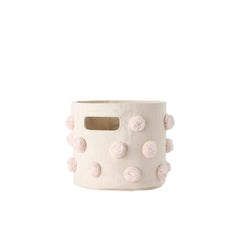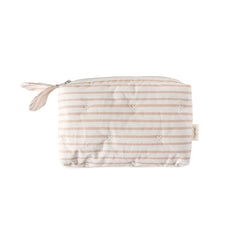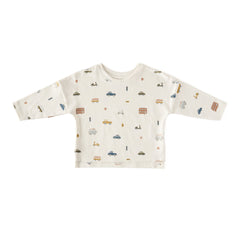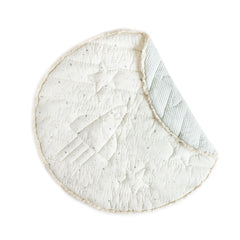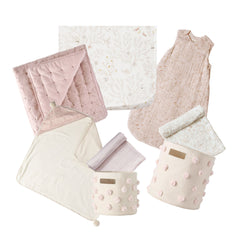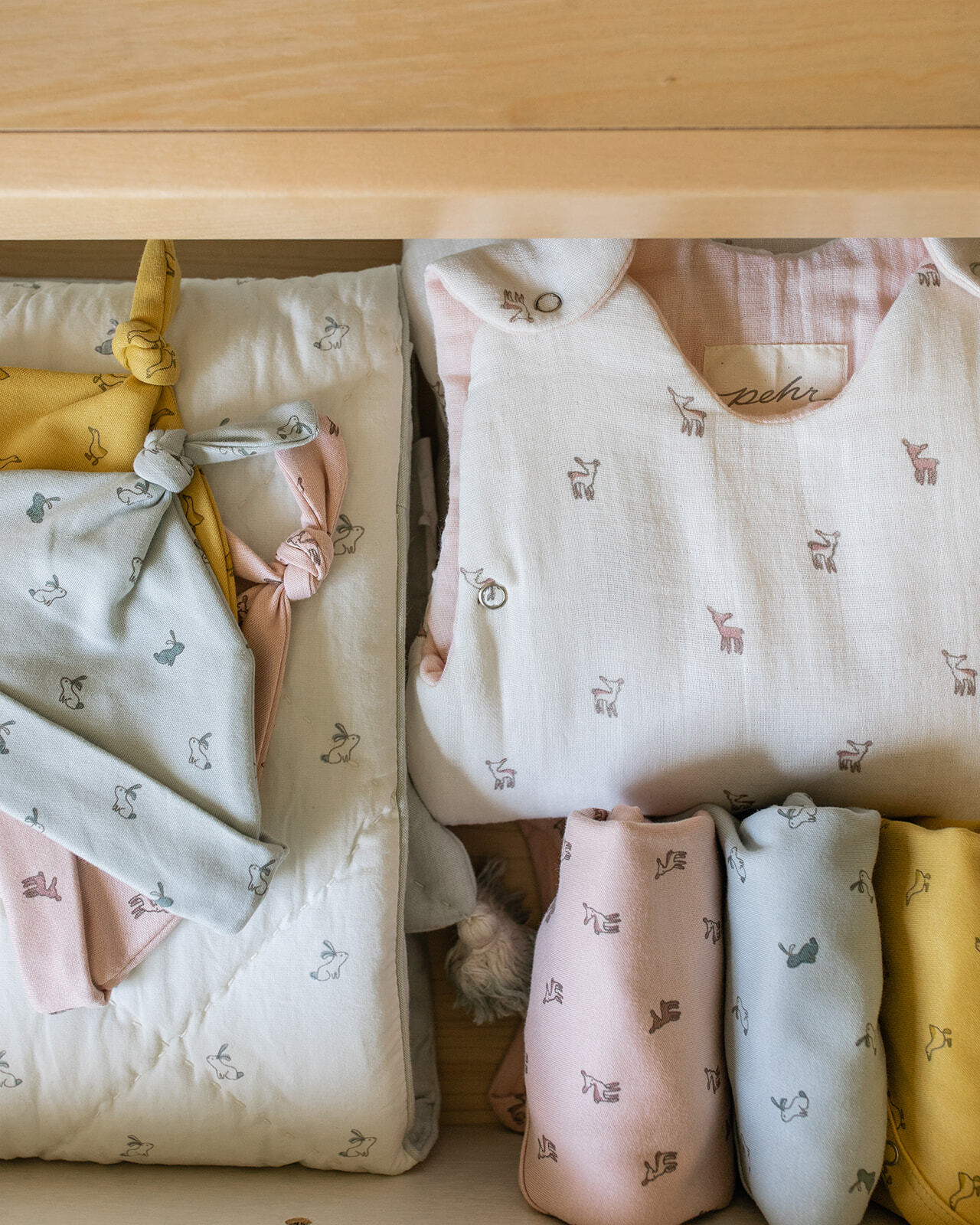Your little one will go through a lot of outfit changes every day, especially during their first year of life and you are going to be tasked with being their personal stylist. Coming up with adorable outfits for your little one can be a lot of fun, especially if you’re a pro at organizing baby clothes. Having a great system in place that works for you and your little one will make life much easier and give you more time for the things that really matter like bonding with your little one. If you’re not sure where to start, we’ve put together our top 15 tips for how to organize baby clothes. They’re incredibly practical and sure to save you bundles of time in the long run. Ready? Let’s get organized.
Table of Contents
- How to organize baby clothes before your little one’s arrival
- Organizing baby clothes once your little one arrives
How to organize baby clothes before your little one’s arrival

Tip #1 - Get started early
There is no one single best way to organize baby clothes. However, there is a universal rule that always applies when it comes to sorting them out: it’s best to get started early. Once you tell your family and friends that you’re expecting, it’s likely you’ll start receiving gifts and hand-me-downs. The longer you wait, the more you’ll have to organize and you’ll be stuck with a mountain of clothing to sort through in no time. In this case, the early bird definitely gets the worm, so once your nursery is ready start sorting through your little one’s clothing. Make sure you feel good and settled at least a few weeks before your due date, this way, if your baby arrives early, you’ll come home to an organized and functional nursery.
Tip #2 - Not all brands fit true-to-size
Organizing your baby’s clothes by size is a no-brainer. It makes sense to group items together based on when your baby will be wearing them. But, what you might not know is that not all baby clothing will fit true-to-size. Just as you’ve likely experienced with your own clothing some brands tend to run small while others might run a little big. When you’re organizing baby clothes, start by laying everything out by the size on the label. If you notice that certain items look a little small bump them down into the smaller size group. If the item looks bigger move it over to the larger size group. This little bit of extra work will make all the difference once your little one arrives!
Tip #3 - Leverage storage
Now that your little one’s clothes are divided up by size, it’s time to decide where you’ll store the different size groups you’ve created. It’s a good idea to think strategically about what items you’ll need right away and what items your child likely won’t be wearing for at least a few months. Make use of whatever storage space you have to stow away items that your child won’t need for a while. This will help you keep the nursery space organized and ensure that it’s easier to pick out your child’s clothing for the day.

Tip #4 - Make the most of your closet space with door storage
Speaking of storage, if you’re working with a small nursery space, there are some great tricks to make the most of the space you do have available. One of our favorites is closet door storage. Install baskets or shelving on the inside of your closet doors and you’ll have tons of extra room to organize accessories or clothes that are currently too big for your baby.
Tip #5 - Less is more
Many new parents like to load up dresser drawers and closet space when organizing baby clothes knowing that their little ones will be cycling through a lot of clothes in the first few months at home. However, having a jam-packed drawer can actually make things more disorganized in the long run. Keep your dresser drawers and closet stocked up but make sure that you can easily see and grab the items you need. If you can’t, take some clothes out and put them in storage.
Tip #6 - When in doubt roll it out
Baby clothes are tiny which means the folding techniques you use on your own clothes sometimes won’t do the trick. When in doubt, roll it out! What do we mean by that? Rolling your little one’s clothing items is not only a space saver but, unlike stacking clothes, it ensures you can see everything that’s in the drawer so you can easily find the items you’re looking for.
Tip # 7 - Separate nighttime essentials from daytime clothing
It’s always a good idea to group clothing together based on when you’ll need to access it. So, keep your nighttime essentials like pajamas, swaddles, and towels for bathtime all together in one drawer. This way, you’ll have everything you need in one spot for your nighttime routine with your little one.
Bonus tip: a lavender sachet in your nighttime drawer will help relax you and your little one before bed.

Tip # 8 - Give diapers top billing
Sometimes when parents start organizing their baby’s clothing they forget to leave space for diapers. Make sure you give diapers top billing. By that, we mean keep them in the top drawer or somewhere else that is easily accessible because you’ll be reaching for fresh diapers often.
Tip # 9 - Dividers are your best friend
Whether you’re organizing your baby’s closet or dresser drawers, make sure to use dividers and baskets to separate out different types of items. This is especially useful for accessories like socks, hats, and headbands. But, it’s also great for keeping onesies, tops, and bottoms organized as well.
Tip #10 - Install additional closet rails
You’ll need the height in your closets for adult-sized dresses and pants but in a nursery, all of that extra height can become wasted real estate which is a shame. To maximize your closet space, add an additional closet rail. You’ll be able to hang double the number of clothes in the same amount of space.

Tip #11 - Use clothespins to hang baby clothing
Speaking of hanging your baby’s clothing. Finding the right size hangers can be a bit of a pain. Instead, transform adult-size hangers into something that will work for baby clothes too by using clothespins.
Tip #12 - Hang baby shoes with shower curtain rings
One of our favorite closet organization tips? Use shower curtain rings to hang baby shoes. You can purchase shower curtain rings at most home hardware stores. They work perfectly for little shoes and help keep all of your options visible and easily accessible.
Organizing baby clothes once your little one arrives
Tip #13 - Keep a next-in-line bin handy
Your little one will grow very quickly which means that they will also outgrow their clothing every few months. Once you notice an item of clothing has become too small, it’s helpful to have somewhere to put it so it doesn’t take up space in your dresser. Keep a next-in-line bin in your closet and store outgrown items there. When you’re ready, you can pass them down to a friend, donate them or save them for new babies to come.
Tip #14 - Use a trolley to put out clothes for the next day
Picking your outfit and laying it out at night for the following day helps set you up for an organized and chaos-free morning. You’ve probably experienced this yourself. The same goes for your baby. Having a small trolley or basket available where you can pick out and place an outfit for the following day is a great way to start things off on the right foot and give you more time for morning cuddles.
Tip #15 - Adjust your strategy as needed
As we mentioned earlier, there is no one best way to organize baby clothes. It all depends on your habits, your space, and your routine. And, as any experienced Mom will tell you, things are ever-changing when you’re raising a little one. So, adjust your organization system as needed. What worked well for your 3 month old might not be what works well for your 1-year-old.

